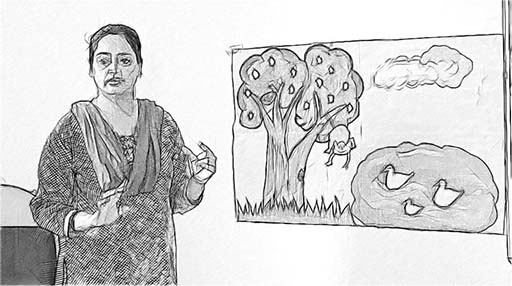1 Learning new words
Start by reading a story in two languages, in an activity for you.
Activity 1: Learning new words
Read the short story below.
There was a man and he seemed very upset. This andras, this man, he went to the kipo behind his house (‘kipo’ is a garden) looking for something. The andras got down on his hands and knees and started scratching underneath the traiandafila, the roses.
Now the wife of the andra, his yineka, was upstairs in the house. The yineka looked out through the bedroom parathiro and saw her andra searching for something under the traiandafila.
She asked him what he was doing. ‘I’m looking for my house keys,’ her andras shouted.
‘Did you lose your house klidia down there in the kipo, under the traiandafila?’
‘No,’ said her andras. ‘I didn’t lose my klidia here under the traiandafila, but the light is so much better here!’
Pause for thought In this example, the Greek words are explained in different ways – what are these different ways? How did you make sense of the words that are not explained in the story: ‘parathiro’ and ‘klidia’? As you read this story, you were learning some new words in Greek: ‘man’, ‘garden’, ‘roses’ and ‘wife’. You probably did not struggle to understand the meaning of the Greek words although you have probably never used the language before, because nearly all the words were briefly explained and then immediately used in a familiar context within a simple and entertaining story. You can teach students English in the same way, adapting a story in any language to introduce English words and phrases. |
Activity 2: Learning new English words
Take a very short story or poem that you and your students know well in Hindi. Choose a few English words you could introduce in the story or poem.
Decide how you will introduce the English words. Will you translate them, or explain them in some other way?
You could use pictures to help the students identify and learn the words in English (Figure 1).

Try out your bilingual story or poem with a colleague. Listen to their feedback and make any changes that will improve the use of English words in the story.
Then try it out with your class. Do they understand the English words? Do they enjoy the story?
What you can learn in this unit
